Matthew Parshchikov - Mineral Photographer Interview
Matthew (Matthäus) Parshchikov is a young mineral collector, geosciences student, and photographer from Cologne, Germany.
Matthew made a significant impression by his fast growth on the field of mineral photography. From mineral photography rookie to his own photography stand at Munich show in just 3 years! He is also actively involved in Young Mineral Collectors group (YMC) since 2022.
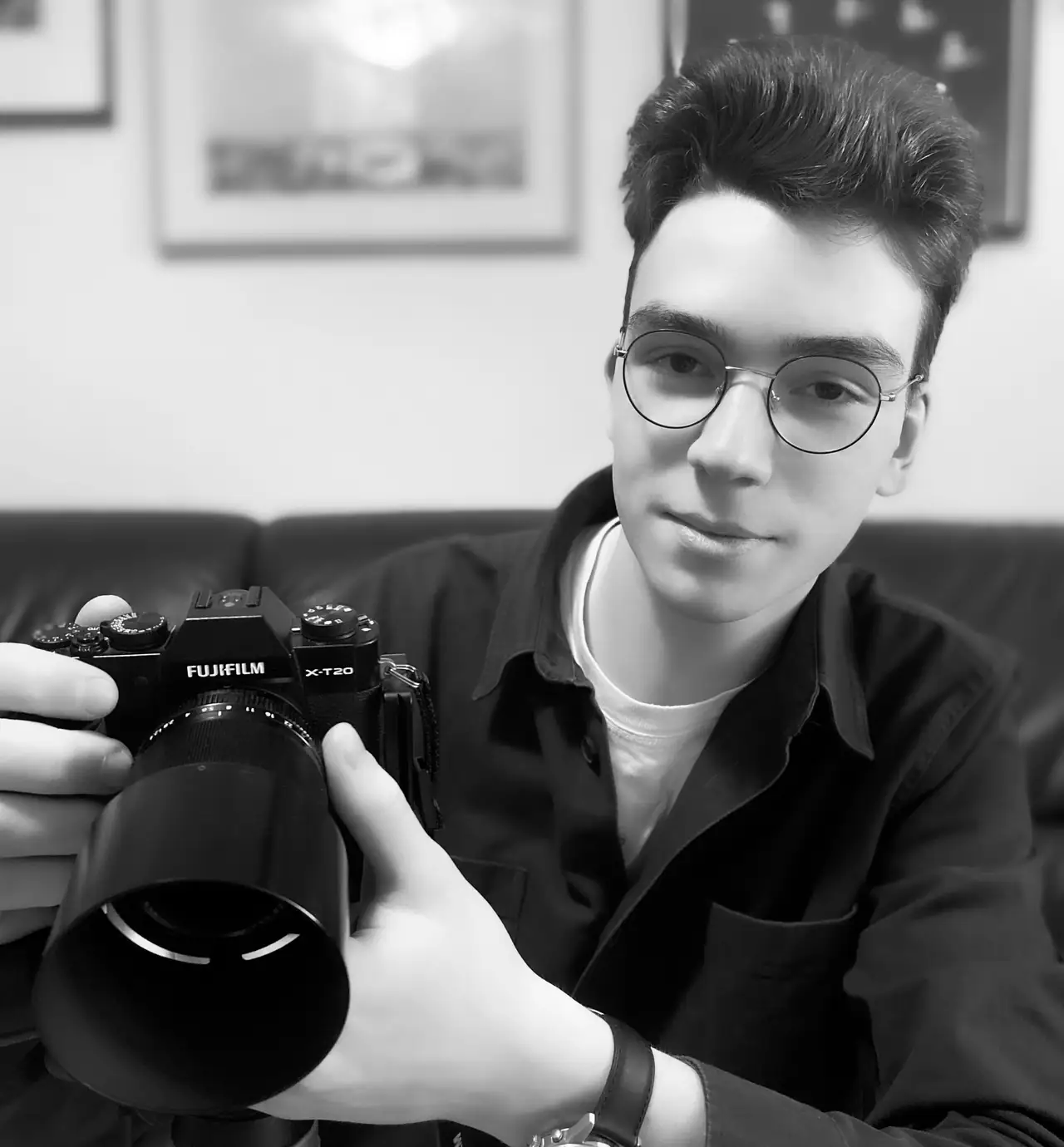
Did you start directly with the mineral photography because of your hobby or did you start with some other topics?
I started mineral photography as a way of showing my collection. Back in 2021 I just used my iPhone 7+ (which I still own) and whatever else I could find as a background. My first pic got some 13 likes from my friends.
I suppose the learning curve was quite steep, there are many tricky technical things. How did you learn all that? Did you have some mentors?
Indeed! I was surprised how I managed to achieve success in such a short period of time. For this I of course have to thank my mentors: Photographer and artist Igor Chepikov from Cologne, who taught me the basics of photography. László Kupi, who does incredible mineral photography and who helped with my first better mineral photos and gave me tips about everything around that.
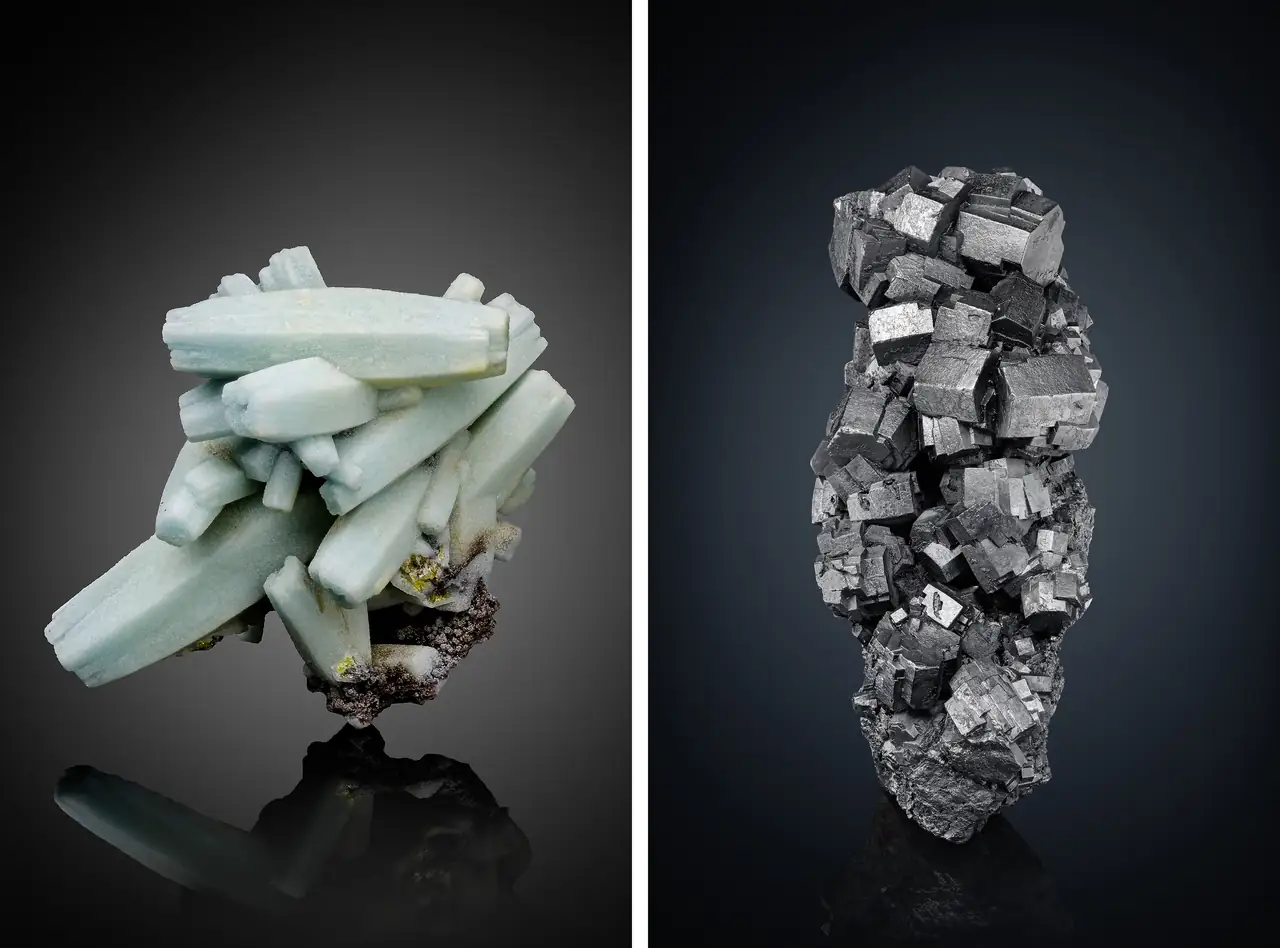
Fabian Wildfang, who I look up to as a collector and who also gave me advice about photography. These are the people that are with me from the beginning and who I have to thank immensely. Of course, as I progressed, more challenges showed up and I met more people who could tell me a secret technique.
How did you get into professional mineral photography? Did customers reach out to you, or did you actively seek a contract?
In August of 2023 I convinced my friend Moritz Wörner (who I met on Instagram) to send me some of his specimens and I would photograph them for free. I did this because I had run out of (good) specimens to photograph from my own collection and I needed some really nice looking ones.
My friend agreed and sent me three of his specimens. I photographed them and sent them back. A lot of positive feedback came from my Instagram followers, and we decided to continue this process. Shortly after I announced that my commissions were open multiple people reached out to me. I was still not sure if it was too early, I didn’t feel as good yet.
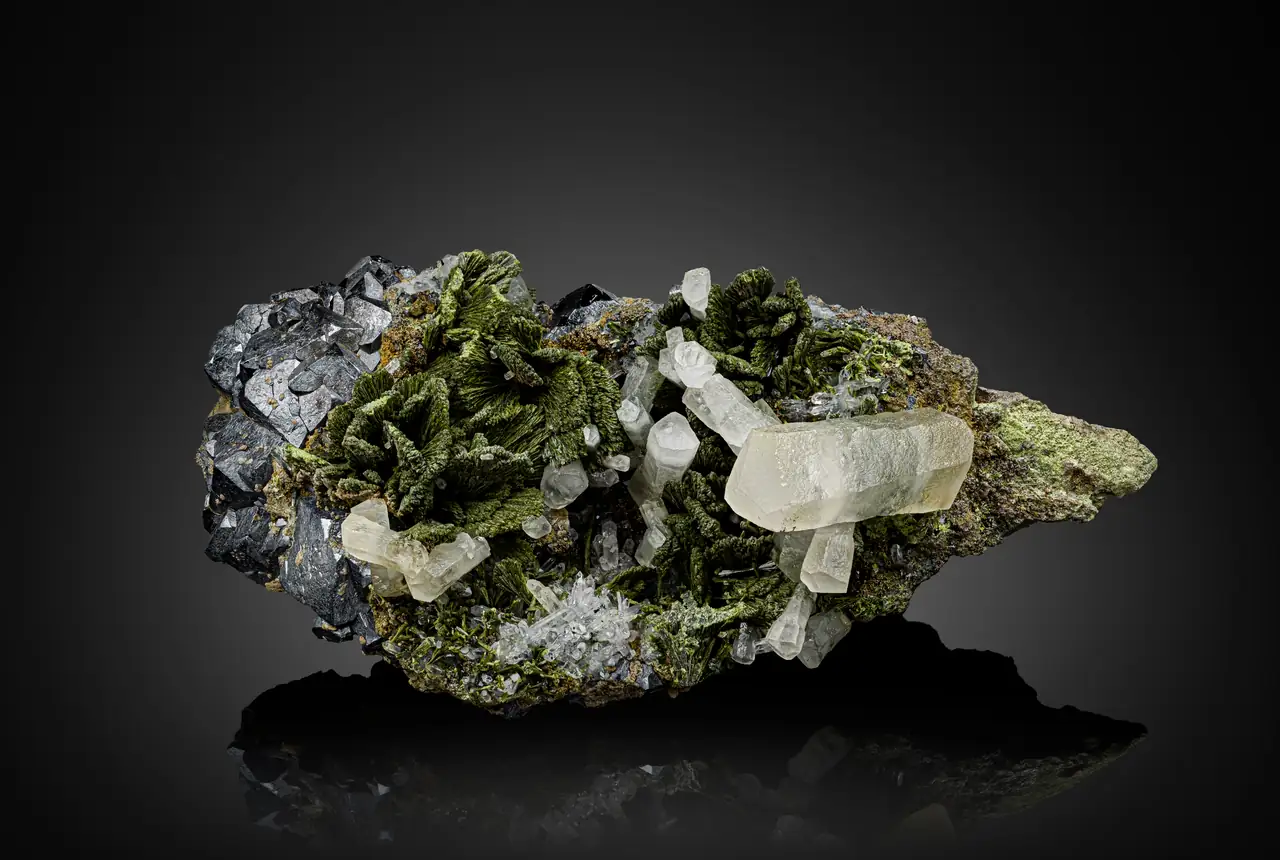
The same year, shortly before the Munich Show my friend helped me make a mpmineralphotography.com website for me to publish my latest photos and attract more clients. Sadly I didn’t have a booth there, so I couldn’t photograph on site.
Some people asked me if I could photograph a mineral, but I had to turn down the offer exactly because of that. Luckily for this year’s Munich Show I will have a booth. Then recently I did a makeover on my website and shared it. It again attracted some new and old clients.
Very obvious question: What camera and equipment do you use and why?
I use a Fuji XT-20 and a Fujinon XF 60mm lens. While it only has 24 megapixels and there are obviously better cameras, I prefer not to upgrade right now just because I’d rather buy minerals instead.
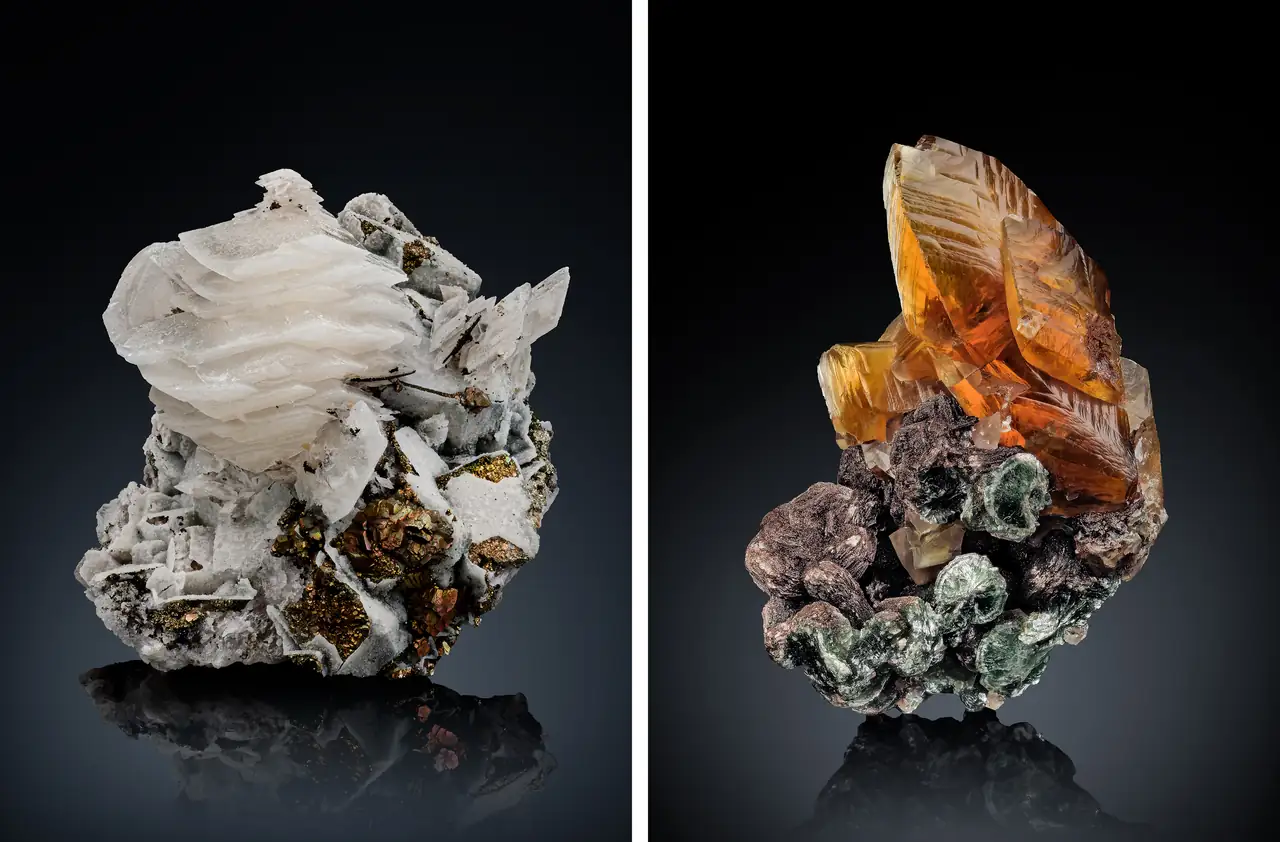
Another important problem is light. How do you handle this?
I use artificial light. I desperately need focusable lights on goose-necks because they are brighter and more precise but this also lies somewhere in the future.
How do you handle backgrounds? I noticed you have different types. Do you use real physical background setups (like László Kupi or Jeff Scovil) or software generated (like Albert Russ)?
This is an interesting question because I merged both approaches together. This idea came from Fabian Wildfang, he used a large photo of sandblasted/milky glass with a big light circle or halo in the middle which he could put behind any mineral.
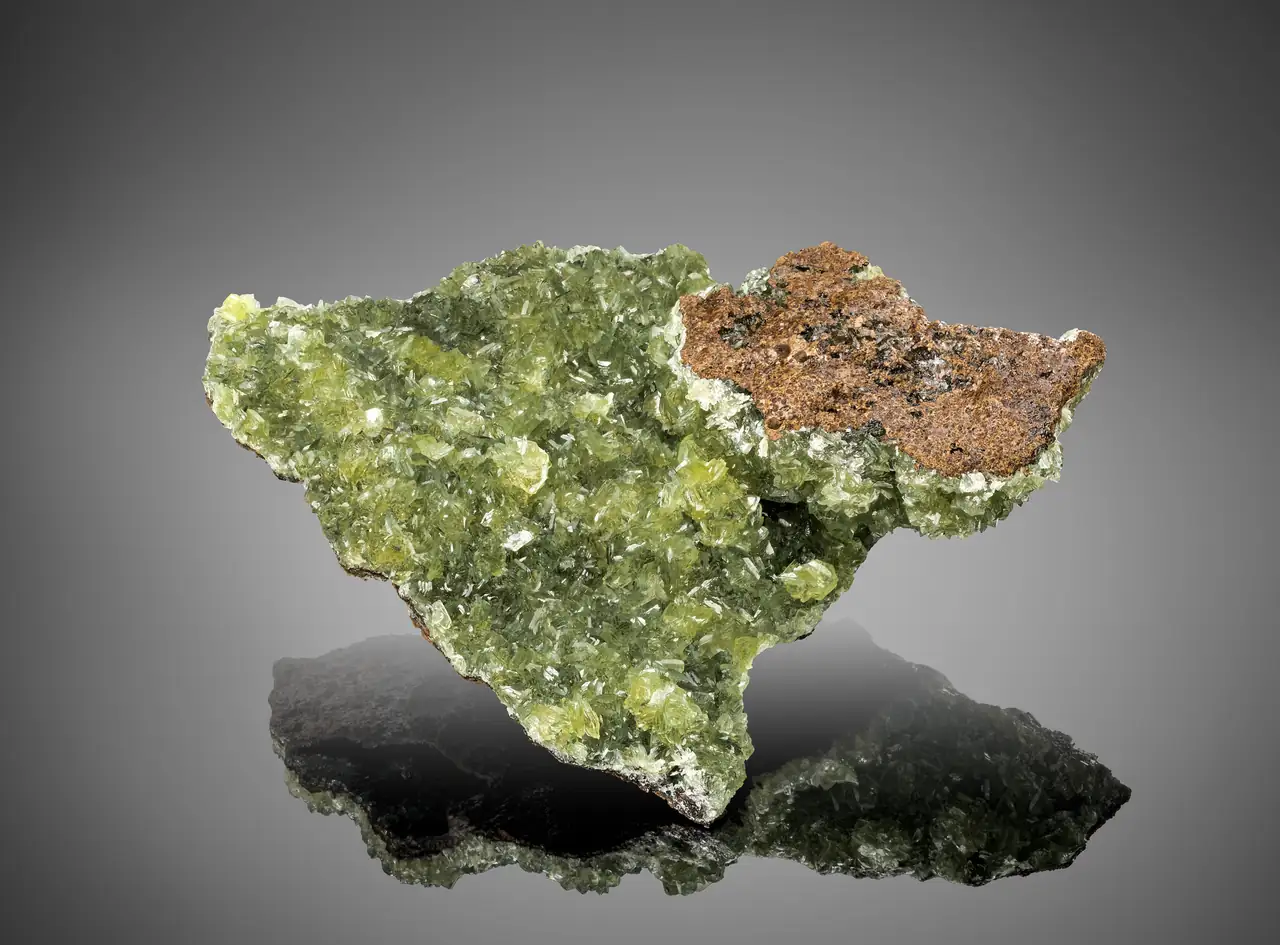
Because my reflection is natural however (acrylic or black glass), I cut the mineral out with the reflection and put it on a photo of a background I photographed and modified earlier.
Then in Photoshop I transform the background to my needs. I have two backgrounds, one in warm and one in cool light.
This brings us to the controversial topic, which is background swapping. Many photographers consider this as a fake or not a real photo. What is your opinion?
No, I don't think that it’s faking. The focus is on the mineral anyways and unless you use the background as a compositional tool (like garnet collector Adrien Sautier or photographer Evan D’Arpino) it really doesn’t matter if the background is real or not.
As long as it’s not pure black or white because it simply looks bad with a reflection. I prefer a natural reflection though because it looks more real.
I noticed you prefer to photograph specimens at home. This means extra hassle with shipping. What is your experience with this so far? Are people willing to risk shipping?
Yes, I photograph at home because it is easier for me (timing, time spent, money wise). Also because I was going to school and am now a student at the university of Bonn in Germany, taking a trip is not easy.

I do however offer photography on site if I don’t have to pay extra for the transport or if I happen to be in the same city anyway. I am actually writing this on my way to a friend where I will photograph his minerals on site. Another reason why I usually don’t do this is because I have to take all of my 15 kg of equipment with me.
Shipping has never been a problem. The collector pays for it both ways, still cheaper than paying for my flight or train ride. Some of my friends do not trust their shipping company, which is completely fine, but I have not faced any problems yet.
What is your experience with postal service and how do you handle insurance? Do you have any tips for sending sensitive and/or expensive pieces?
Everything is based on trust and my reputation. I try to handle all specimens with great care. I haven’t broken any pieces (that are not mine) during photography. And about tips for sending expensive pieces: Pack them well.
You did photograph specimens for a museum in Bonn. How did you get to this point?
When I was in 10th grade, we had to do a three-week internship. I decided to do it at the mineral museum in Bonn since it is just a 45 minute ride to Bonn.
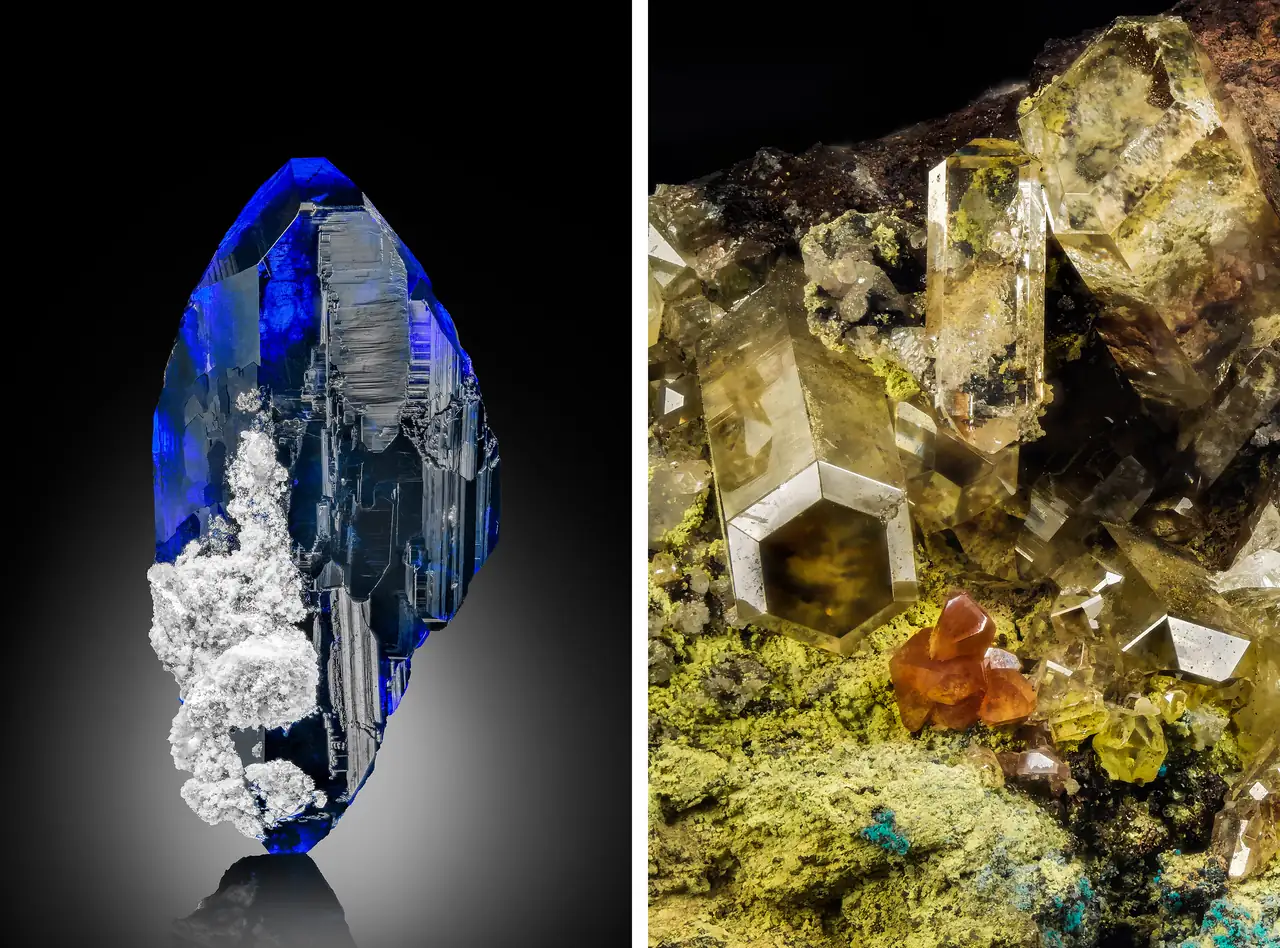
That’s how I got the contacts. In 2023, as mentioned above, I needed access to higher quality minerals so I asked them if I could photograph some of their specimens.
That’s how I spent 13 hours spread out over three days in the museum and photographed 60 minerals. I edited 50 and discarded the rest. Working under time pressure sometimes causes minor errors during photography. All photos from the museum can be seen in a separate gallery on my website.
How do you select mineral specimens for photographing? Is that just a matter of business decision or do you also shoot something just for fun?
I always hope that I get to shoot an incredible mineral, but usually it’s just the stuff the clients want photographed. This does not mean that they are bad or not beautiful. Sometimes I wonder why this specimen deserves a photo, but that happens rarely.
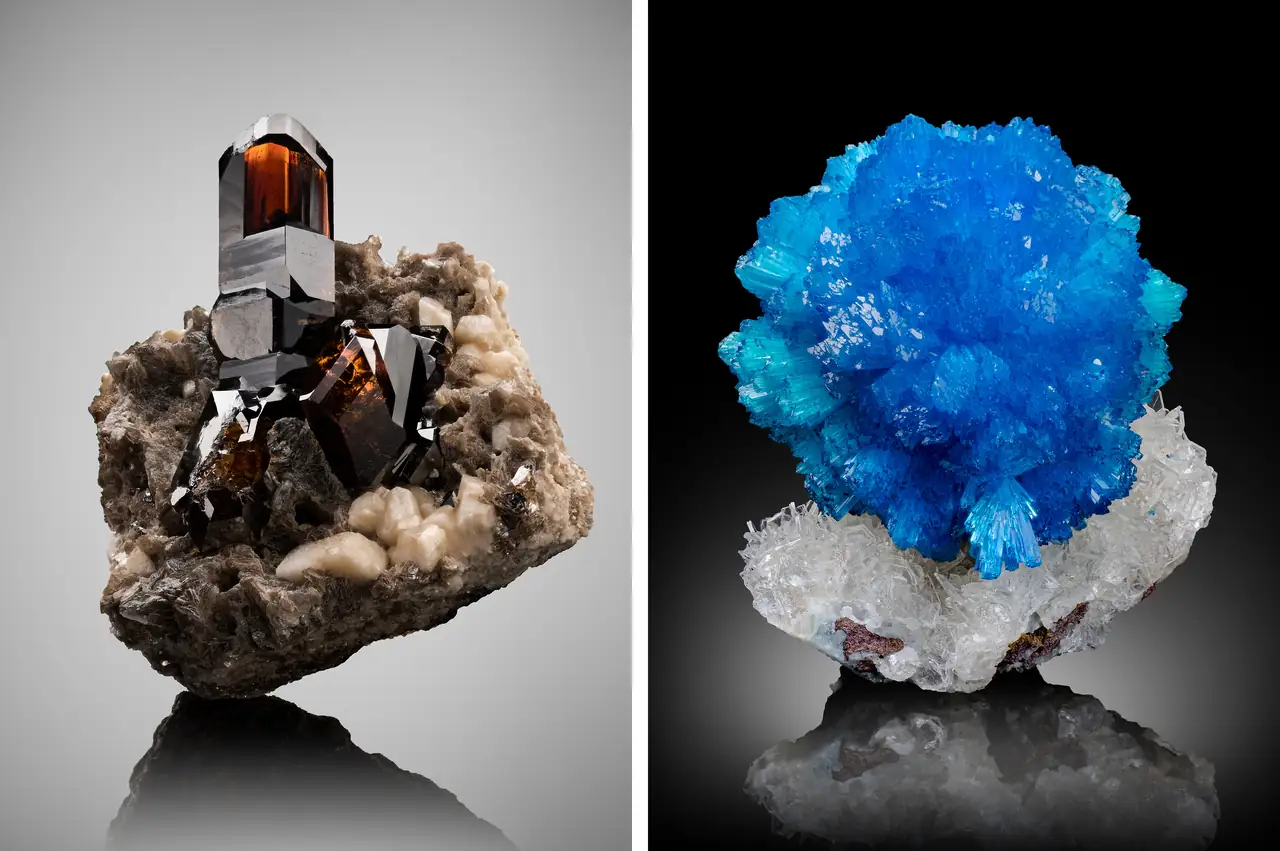
I enjoy photographing highly aesthetic pieces and ones from my personal collection. I do shoot some pieces just for fun though, they have to be insanely good and will be placed on my website.
Do you plan to become a full time mineral photographer?
No. Maybe when I’m very old. With the current prices for everything and of course my own pricing, it’s not profitable. In general, there are higher earning jobs I want to do. It’s fine as it is right now, the occasional job here and there and focus on my studies.
Do you see a future in mineral photography? Is it growing or not?
With the increased access to the internet, more people get to information quicker. It seems to me though that after a steep learning curve, the skill meets a plateau where it stays. Scientific mineral photography has met its limits.
While there are (and will be) constantly new photographers, all come to the same visual result of either a mineral floating in void or lying on (sand blasted) glass.
In my opinion we need more videographers who capture the magic of minerals in motion or people who have a more artistic approach, as I mentioned earlier.
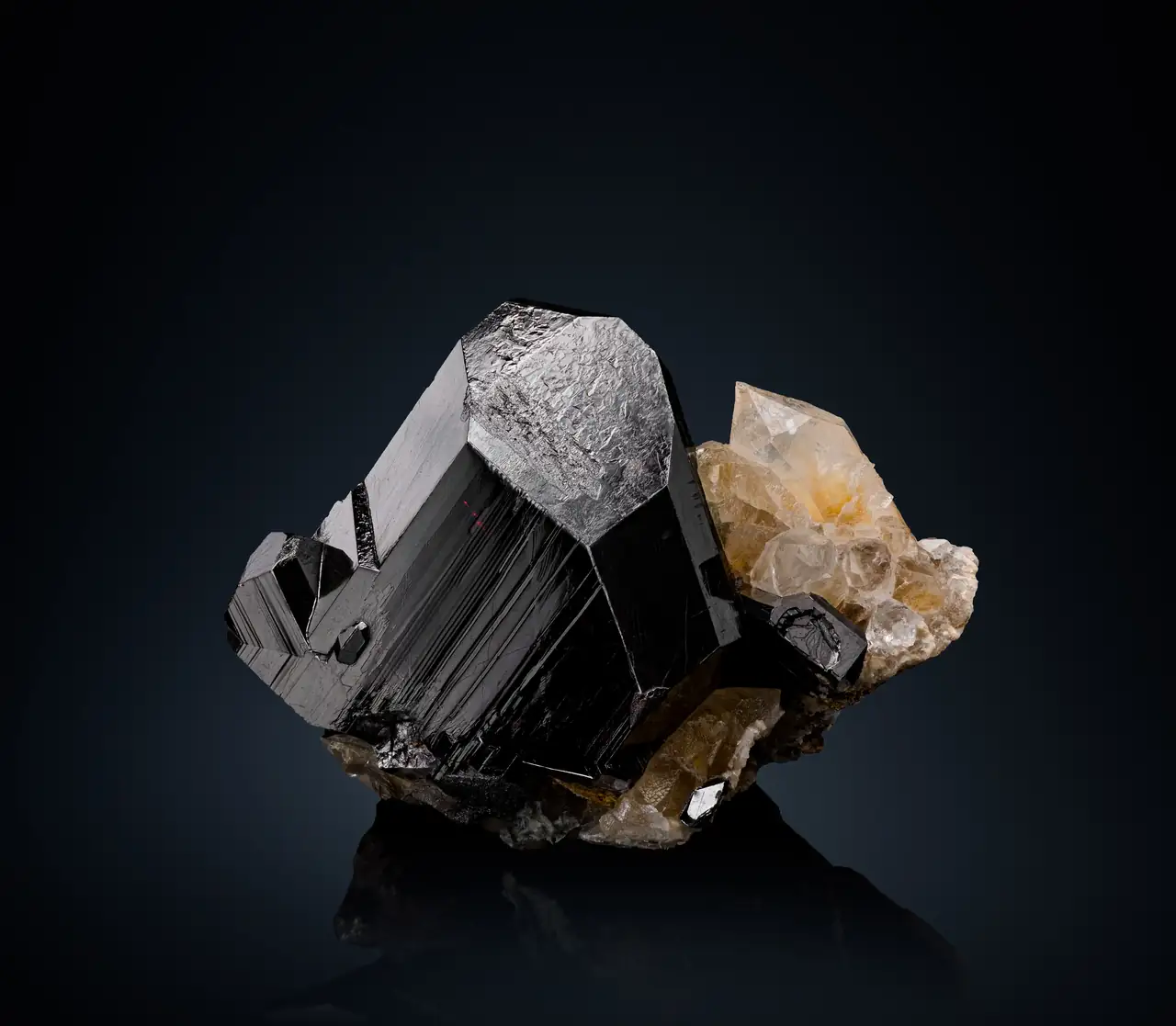
Do you have some dreams, goals and plans regarding mineral photos? What are your plans or dreams for the next decade?
My current dream is to become more known internationally and for my photos to be published in various magazines and books.
Recent publications in Extra Lapis and the Rocks & Minerals magazines set the process in motion and the increase of my media presence has started also thanks to this interview. I’m still thinking how I could improve. It’s a never ending learning process.
Lets shift focus on your mineral collection. Can you tell us briefly about it?
I collect minerals from post-Soviet countries, such as Russia, Kazakhstan, Ukraine, Tajikistan, Azerbaijan etc. I look for beautiful and rare minerals in the miniature to cabinet size.
Regarding your focus on minerals from the post-Soviet area, why this? Does the current war between Russia and Ukraine affect the access and business connections for mineral collectors?
I decided I want to collect specimens not everyone owns or from localities that are rare or not as famous. In the mineral world there is an increased difficulty with picking a collection focus.
Usually, people focus on international and aesthetic specimens. There is a limited number of truly beautiful minerals, but still more than from Soviet countries. I wanted to have something I have to wait for. Like aesthetic Soviet minerals.
Another important reason is that my father lived half his life in Ukraine, my mother is Russian and has Ukrainian roots, and my grandmother lives in Moscow, where I often visited before Covid and the war.
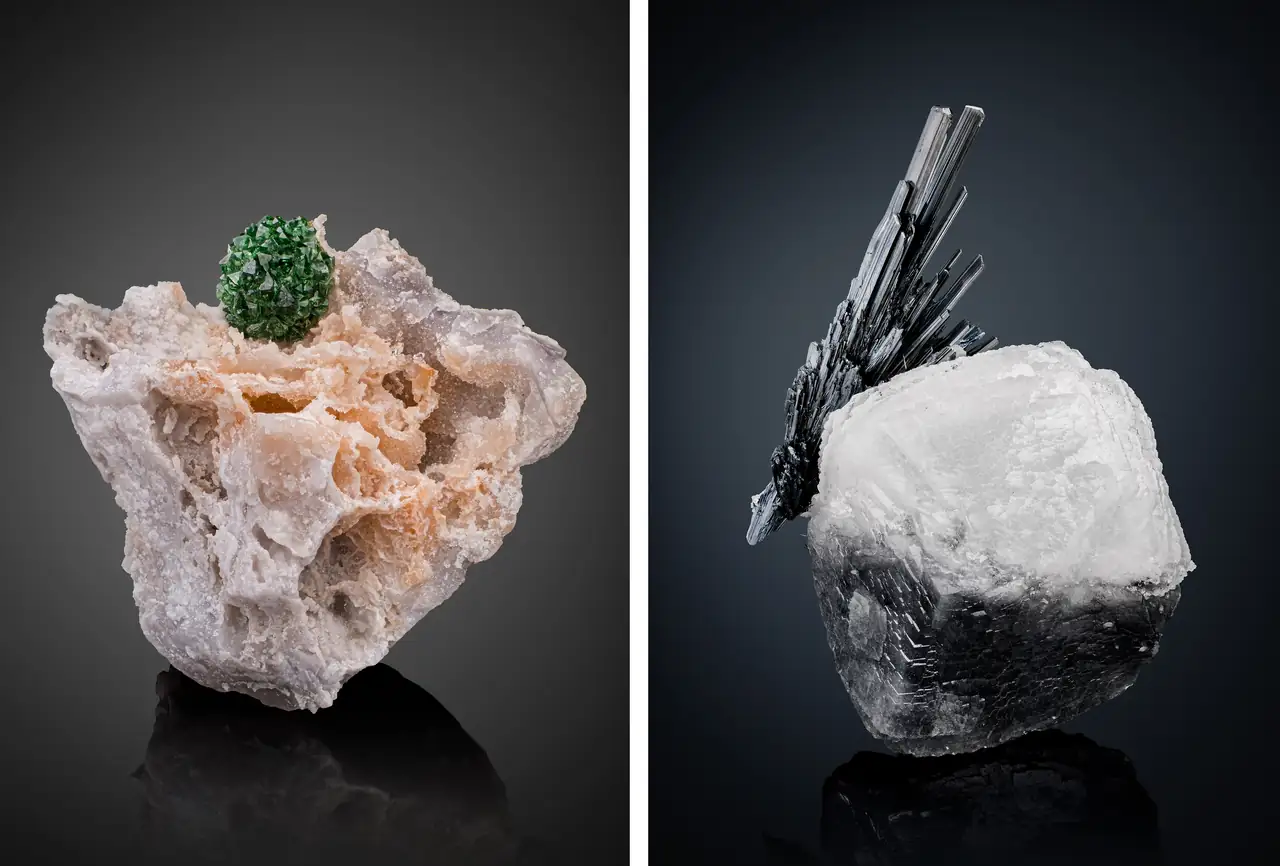
Russia's invasion of Ukraine, in addition to the general catastrophe and human drama, raises a moral dilemma when considering purchasing minerals from Russia.
Maybe a new era of collecting has begun, where the supply of post-Soviet minerals became limited to what is already in collections in Europe and US and only a small number of great specimens coming to Tucson and possibly the other big shows too.
Do you go field collecting or do you rely solely on purchasing and keep only top quality "connoisseur" specimens? I ask also because there are numerous localities in the post-Soviet area (excluding the current war) which are very promising and outside the scope of most.
I wish I could go field collecting in Russia or Ukraine or generally any post-Soviet country. But the regulations prohibit all collecting because the property is owned by some very rich people who don’t care about the rocks or if they care, then only to use for their own profit. And the forests in the Urals don’t look promising enough for me.
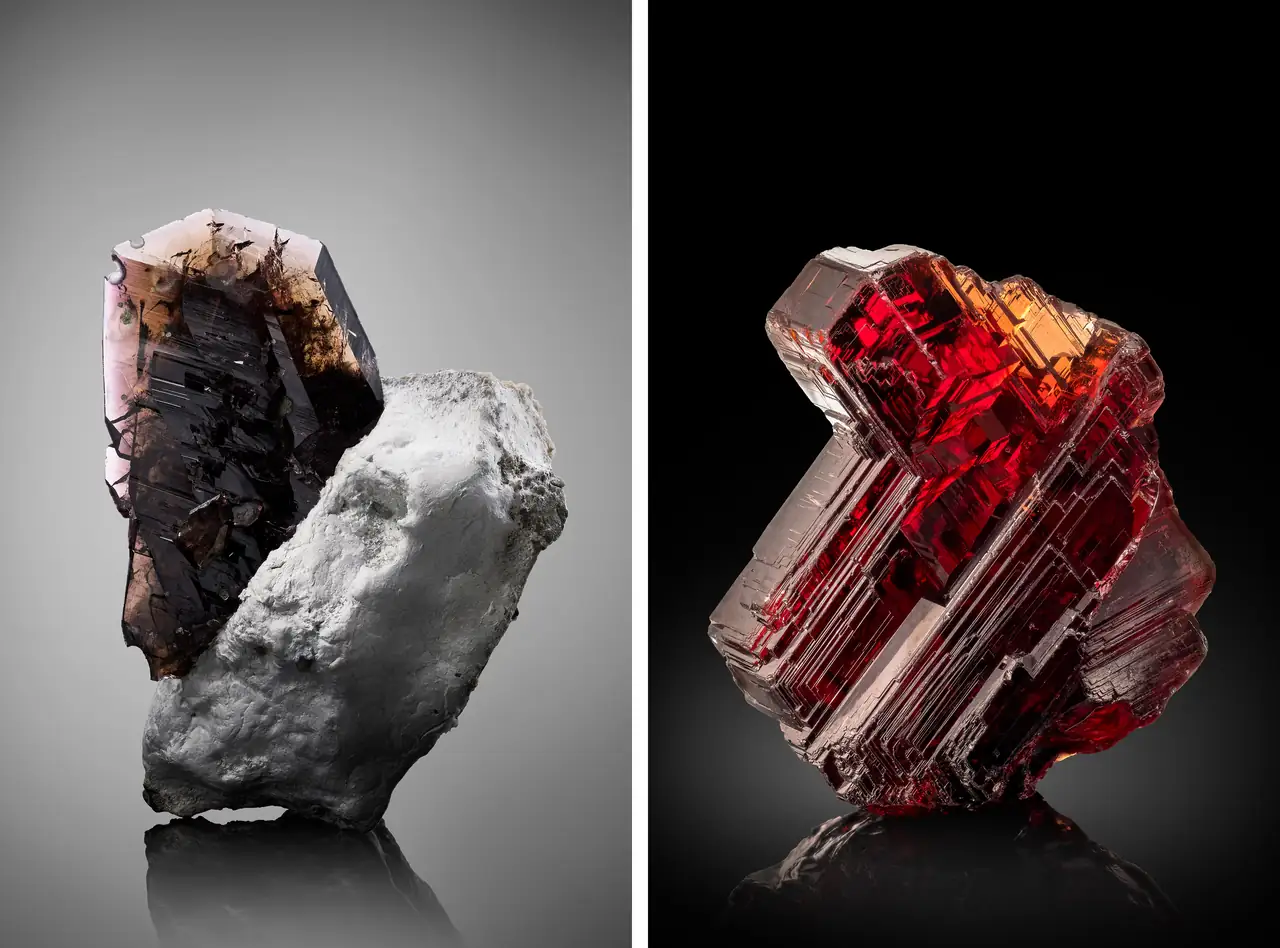
What are your collecting plans? Rather wide or rather very limited and increase the quality?
Quality over quantity. It’s the only way I can satisfy my need for beauty and compete with international aesthetic collections. Though usually any perfect N’Chwaning rhodochrosite wins over a perfect post-Soviet specimen.
As a collector and photographer, how do you value the quality of a specimen? Do you consider just aesthetics or also a provenance or scientific value?
It’s nice to know that it came from a museum, but it only adds monetary value for me personally. When buying I select based on aesthetics or rarity and stick to my preferred collecting size.
Some pieces I own are sentimental to me though because I either got them early in my collecting career or they come from good friends.





Comments